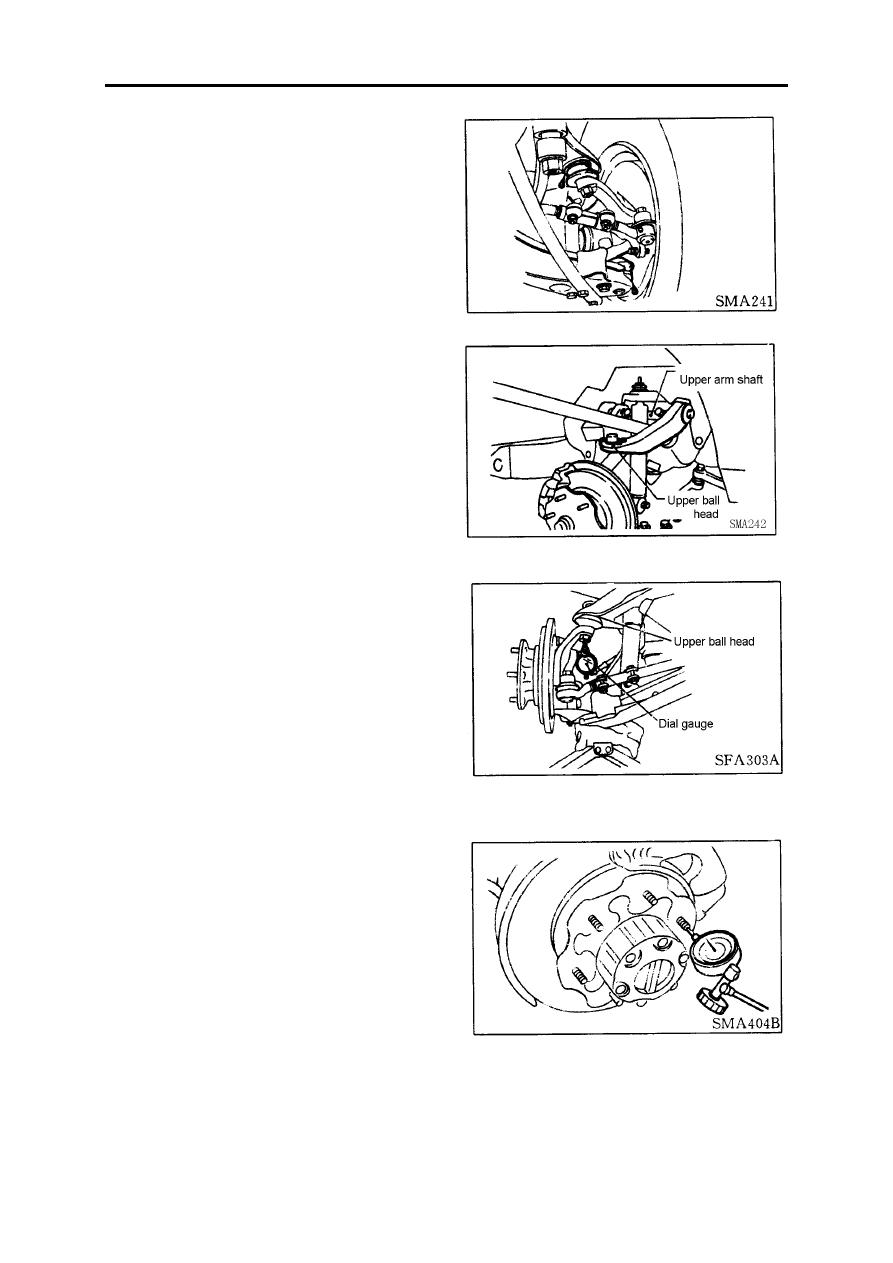Dongfeng EQ1030T47D-820. Manual - part 13

Front suspension
FA-4
Chck the upper and lower transverse arm ball head
dust proof for any damage, crack, or loose.
Warning:
If any of the above situation has happened, replace
the ball head pin in time and forbidden to drive the vehi-
cle. Otherwise, it may cause accident.
Check the vertical clearance of the ball head.
Upper ball head clearance ≤ 1.6mm
(1) Lift the front part of the vehicle and set a footstep.
(2) Fix the dial gauge to the tie rod and set the
contact of the dial gauge to the lower edge of the brake
caliper.
(3) Make sure that the front wheel is in the straight
driving line and the brake pedal has been pressed down.
(4) Insert a crowbar between the tie rod and wheel
inner felloe.
(5) At the time of pressing the crowbar, observe the
Max. read of the dial gauge.
(6) If the ball head motion clearance is beyond the
required value, disassemble the ball head and check, and
replace it if necessary.
Front wheel bearing
Check the wheel bearing for smooth operating.
Check the shaft end clearance.
It is forbidden to have clearance in the shaft end.
If the shaft end has clearance or the bearing operates unsmoothed, adjust the bearing pretightening force.